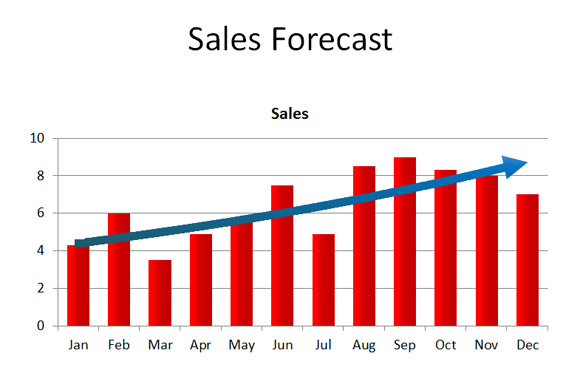Sales forecasting involves determining the sales a business is expected to make in a given period. This could be the first three or six months or even a year. Forecasting can help you determine or identify cash flow problems. You will definitely need a sales forecast if you want to acquire a bank loan for business capital because you will have to provide business a proposal or plan, which should include a sales figure in your Projected Income Statement. Even if you will not seek a loan it can help you manage your expenses and monitor your sales growth.
Sources of assistance for sales forecasting:
- Competitors
- Neighbouring businesses
- Trade associations
- Trade directories
- Trade publications
- Trade suppliers
There are several factors that could affect a sales forecast. We will look at these as they relate to new and existing businesses:
New businesses
For the new business there is no previous information to assist in the decision-making process. Therefore, based on the analysis from your market research, you will have to determine how many customers would buy your product and how much sales you would get in a specific period.
It is said that 20% of your customers accounts for 80% of your sales. Therefore you need to define your primary market (the businesses or individuals who are most likely to buy your product). A primary market could be:
- middle income females, between the age 25-60 yrs, who have 1-3 children and own a home
- Small business owners with projected sales of $100,000 annually
You also need to look at your location, are your customers near? Can they get to you quite easily, would they have to travel far? Would they get what you sell at an earlier stop?
Get household income statistics and structure from libraries and government publications. Get other household or customer information from trade publications, newspapers and periodicals.
You could use similar businesses as a guide. Estimate how many customers they get on a daily, weekly and monthly basis using their customer volume to help you determine your sales figure. You should make sure that it is a business that offers similar products to yours.
Once you are able to determine monthly sales, then annual sales is a small calculation away.
Existing businesses
For an existing business, last years sales would be a starting point, of course taking into account what the sales trend has been over a period, you then should be able to make a reasonable sales estimate.
Make assumptions about the market, taking into account things that could positively or negatively impact sales. Will your market grow or decline and by how much? Quantify it, thus you should estimate whether you will sell 5,000 more units or you will sell 6,000 less units or you could use percentage – will it fall or rise by say 6%?
Take into consideration the expected pros or cons. Are there new taxes on the horizon? Will this mean you will have to increase prices or maybe salaries have increased? Will you have to advertise more?
What about the product itself, has there been steady growth? Has sales been on the decline? Are you introducing a new product that has great potential and so is estimated to boost sales?
Calculation: If your sales tend to be stable:
Last year sales + projected changes in inflation = projected sales
If projected inflation is 5% and you normally sell an average of $60,000 annual:
60,000*0.05 = 3,000 :. Total inflation
60,000 +(- 3,000 )= $57,000 – This would be your annual projected sales figure.
If there are other changes that you have estimated will affect sales positively or negatively beside inflation, calculate as follow:
Last year sales + projected inflation + other change(s) = projected sales
Pitfalls
Sometimes sales plans are guided by unrealistic assumptions. In this area, as with any other, you must not be overly optimistic – exercise prudence. Be time specific for real measure. Have a monthly and an annual projection; you can use your monthly projection as a guide for assessment. Consult with and get the opinions of others. If you have others working with you it has to be a team effort, especially if you are not the person in charge of sales.
Test:
At each period, advisably at the end of every month, you should check your sales projection against actual sales. Forecast will never be 100% accurate so there should be allowance for some margin of error.
Did you rise above or fall below projection? Deviations of over 10% should indicate the need for another, more detailed analysis.




We’re a bunch of volunteers and opening a new scheme in our community.
Your site provided us with helpful information to work
on. You’ve performed a formidable job and our whole group might
be grateful to you.